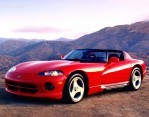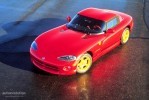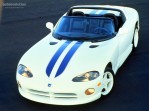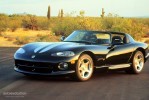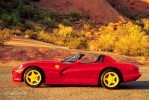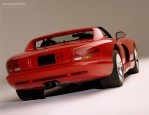Body style: Coupé (two-door)
Segment: Roadster & Convertible
Production years: 1991, 1992, 1993, 1994, 1995, 1996, 1997, 1998, 1999, 2000, 2001, 2002
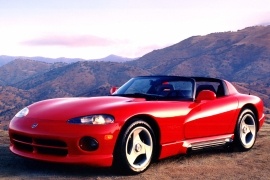 15 Photos
15 PhotosDodge changed the way American sports cars looked when it introduced the Viper concept car at the 1989 North American International Auto Show and dared to bring that prototype into production just two years later.
Legend says that after spending a weekend with his 1985 Autocraft MK-IV Cobra, Bob Lutz returned to the office and asked the design team to build a modern-day sports car with the same spirit. Since he was the big boss from Chrysler, nobody could say no, and thus Tom Gale penned the Viper as a far more ferocious vehicle than the Cobra MK-IV. For the engineering part, Chrysler worked together with Lamborghini's engineers, since the American automaker owned, at that time, the Italian brand. Finally, the result was the 1991 Viper, which inspired cartoons and movies. Deliveries started in 1992. It was an outrageous vehicle!
The front air-dam cross-hair look became an inspiration for many other Dodge vehicles that followed; it became one of the brand's signatures. Its curved body panels and the headlights that resembled a viper (snake) eyes were so audacious that it became an instant hit. Customers didn't really care that there were no door handles or a fixed roof. They bought it for the sound it made through the side exhausts. Later on, the pipes were moved to the back of the car due to safety reasons.
Inside, the tiny cabin could accommodate just two people on the sports seats. The tall center console housed the gear stick and the handbrake, while on the center stack Dodge installed several gauges considered crucial for a sportscar (or supercar, as some people considered it).
Despite not having ABS or traction control, the Viper's first generation sold well, and it changed the way how people from other countries saw American supercars, especially after the Viper won its class at the 1995 24 hours of Le Mans.
DODGE Viper RT/10 1991, 1992, 1993, 1994, 1995, 1996, 1997, 1998, 1999, 2000, 2001, 2002
- 8.0
DODGE Viper RT/10
8.0
ENGINE SPECS - 8.0 | |
|---|---|
| Cylinders: | V10 |
| Displacement: | 7990 cm3 |
| Power: | 335 KW @ 5200 RPM 455 HP @ 5200 RPM 449 BHP @ 5200 RPM |
| Torque: | 490 lb-ft @ 3700 RPM 664 Nm @ 3700 RPM |
| Fuel System: | Electronic Injection |
| Fuel: | Gasoline |
PERFORMANCE SPECS | |
|---|---|
| Top Speed: | 180.2 mph (290 km/h) |
| Acceleration 0-62 Mph (0-100 kph): | 4.5 s |
TRANSMISSION SPECS | |
|---|---|
| Drive Type: | Rear Wheel Drive |
| Gearbox: | Manual, 6 Speed |
BRAKES SPECS | |
|---|---|
| Front: | Ventilated Discs |
| Rear: | Ventilated Discs |
TIRES SPECS | |
|---|---|
| Tire Size: | 335/30 ZR 18 |
DIMENSIONS | |
|---|---|
| Length: | 176.2 in (4475 mm) |
| Width: | 75.7 in (1923 mm) |
| Height: | 44 in (1118 mm) |
| Front/rear Track: | 59.6/60.6 in (1,514/1,539 mm) |
| Wheelbase: | 96.2 in (2443 mm) |
| Cargo Volume: | 6.8 cuFT (193 L) |
WEIGHT SPECS | |
|---|---|
| Unladen Weight: | 3439.8 lbs (1560 kg) |
FUEL ECONOMY (NEDC) | |
|---|---|
| City: | 11 mpg US (21.4 L/100Km) |
| Highway: | 19.9 mpg US (11.8 L/100Km) |
